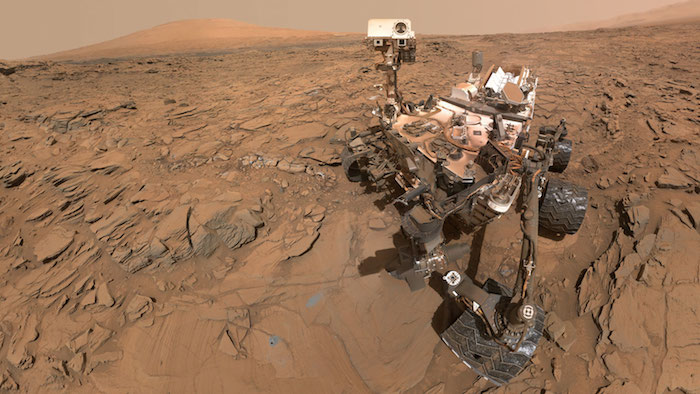.

This May 11, 2016, self-portrait of NASA's Curiosity Mars rover shows the vehicle at the "Okoruso" drilling site on lower Mount Sharp's "Naukluft Plateau." The scene is a mosaic of multiple images taken with the arm-mounted Mars Hands Lens Imager (MAHLI). Credit: NASA/JPL-Caltech/MSSS
-
Mars Science Laboratory Mission Status Report
The team operating NASA's Curiosity Mars rover is taking steps to return the rover to full activity following a precautionary stand-down over the Fourth of July weekend.
Curiosity is now communicating with ground controllers and is stable. The rover put itself into safe mode on July 2, ceasing most activities other than keeping itself healthy and following a prescribed sequence for resuming communications.
Engineers are working to determine the cause of safe-mode entry. Preliminary information indicates an unexpected mismatch between camera software and data-processing software in the main computer. The near-term steps toward resuming full activities begin with requesting more diagnostic information from Curiosity.
Curiosity has entered safe mode three times previously, all during 2013.
The rover landed in Mars' Gale Crater in August 2012. During its first year on Mars, the mission achieved its goal by determining that, more than 3 billion years ago, the region offered fresh-water lakes and rivers with environmental conditions well-suited to supporting microbial life, if life has ever existed on Mars. In continuing investigations, the mission is learning more about the ancient wet environments and how and when they evolved to drier and less habitable conditions.
NASA last week approved an additional two-year extension, beginning Oct. 1, 2016, for the Mars Science Laboratory Project, which developed and operates Curiosity.
NASA's Jet Propulsion Laboratory, Pasadena, California, manages the project for NASA's Science Mission Directorate, Washington. JPL is a division of Caltech in Pasadena.
Quelle: NASA
4179 Views
